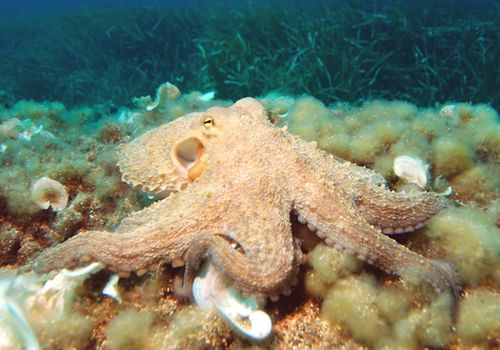
Octopus
Octopus
Introduction: The octopus is a cephalopod of the order Octopoda. It has two eyes, four pairs of arms, a hard beak and its mouth is the centre point of the arms. It is are bilaterally symmetric as are other cephalopods. As most octopuses do not have internal or external skeletons, this allows them to squeeze through tight places. Octopuses are highly intelligent, probably the most intelligent of all invertebrates. For defence against predators, they hide, flee quickly, expel ink, or use colour-changing camouflage. An octopus trails its eight arms behind it as it swims. All octopuses are venomous, but only the small blue-ringed octopuses are deadly to humans. Octopus is a common food in Mediterranean and Portuguese cuisine, as well as a popular seafood dish in restaurants in Swakopmund.
Distribution: The octopus inhabits many diverse regions of the ocean, especially coral reefs.
Diet: Fish and have been known to attack and eat some species of shark.
Colouring: An octopus's camouflage is aided by certain specialized skin cells which can change their apparent colour. They contain yellow, orange, red, brown, and black pigments.
Breeding: When octopuses reproduce, males use a specialized arm called a hectocotylus to insert packets of sperm into the female's mantle cavity (usually the third right arm). Unfortunately males die within a few months of mating and after fertilization, the female lays about 200,000 eggs (varies between species and individuals). The female cares for the eggs, guarding them against predators, and gently blowing currents of water over them so that they get enough oxygen.
Size: The largest octopus species usually weigh around 15kg, with an arm span of up to 4.3m.
Klein Windhoek

